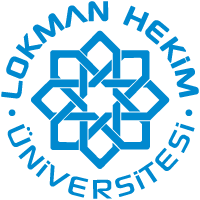Evaluation of the antioxidant potency of Seseli L. species (apiaceae) [Seseli L. Türlerinin (apiaceae) antioksidan potansiyellerinin değerlendirilmesi]
Tarih
2020Yazar
Önder, A. and Çinar, A.S. and Yilmaz Sarialtin, S. and İzgi, M.N. and Çoban, T.
Üst veri
Tüm öğe kaydını gösterÖzet
Objectives: In the present study, the antioxidant potency of ethyl acetate (AcOEt) and methanol (MeOH) extracts from the aerial parts of Seseli L. species was investigated for the first time. Materials and Methods: Seseli species L. such as Seseli andronakii Woronow ex Schischk., S. campestre Besser, S. corymbosum Boiss. & Heldr., S. gummiferum subsp. gummiferum Pall. ex Sm., S. hartvigii Parolly & Nordt, S. libanotis (L.) W.Koch, S. petraeum M.Bieb., S. peucedanoides (M.Bieb.) Koso-Pol., S. resinosum Freyn & Sint., and S. tortuosum L. growing in Turkey were collected and evaluated for their antioxidant capacity by using 1.1-diphenyl-2-picrylhydrazyl (DPPH) radical scavenging and lipid peroxidation (LPO) inhibition methods. Results: The highest activities as a scavenger of DPPH radicals were found in the AcOEt extracts of S. peucedanoides (M.Bieb.) Koso-Pol (IC50=0.49 mg/mL), and S. libanotis (IC50=0.75 mg/mL); α-tocopherol was used as a positive control. On the other hand, in the LPO assay, the highest activities were determined in AcOEt and MeOH extracts (at 5 mg/mL) of S. tortuosum and S. libanotis (84-94%). Conclusion: This report gives important information about the antioxidant capacity of Seseli L. species. This research on antioxidant capacity proves that the use of some species used in Eastern Anatolia (in salads) is correct. With this screening study performed in Seseli L. species growing in Turkey, in the future, it is planned to isolate antioxidant compounds from the most active strains of Seseli L. © Turk J Pharm Sci, Published by Galenos Publishing House.

DSpace@LokmanHekim by Lokman Hekim University Institutional Repository is licensed under a Creative Commons Attribution-NonCommercial-NoDerivs 4.0 Unported License..













